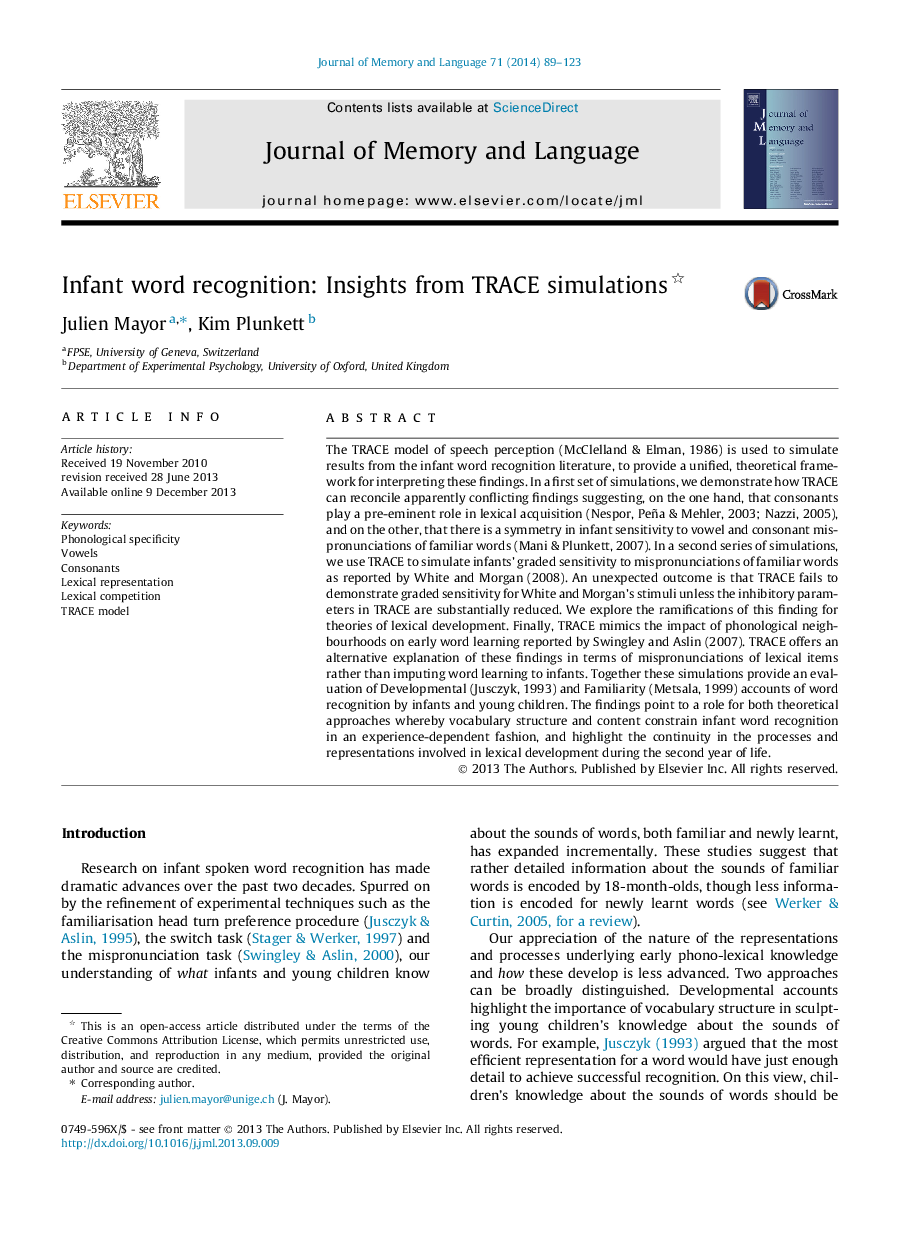| Article ID | Journal | Published Year | Pages | File Type |
|---|---|---|---|---|
| 10459727 | Journal of Memory and Language | 2014 | 35 Pages |
Abstract
The TRACE model of speech perception (McClelland & Elman, 1986) is used to simulate results from the infant word recognition literature, to provide a unified, theoretical framework for interpreting these findings. In a first set of simulations, we demonstrate how TRACE can reconcile apparently conflicting findings suggesting, on the one hand, that consonants play a pre-eminent role in lexical acquisition (Nespor, Peña & Mehler, 2003; Nazzi, 2005), and on the other, that there is a symmetry in infant sensitivity to vowel and consonant mispronunciations of familiar words (Mani & Plunkett, 2007). In a second series of simulations, we use TRACE to simulate infants' graded sensitivity to mispronunciations of familiar words as reported by White and Morgan (2008). An unexpected outcome is that TRACE fails to demonstrate graded sensitivity for White and Morgan's stimuli unless the inhibitory parameters in TRACE are substantially reduced. We explore the ramifications of this finding for theories of lexical development. Finally, TRACE mimics the impact of phonological neighbourhoods on early word learning reported by Swingley and Aslin (2007). TRACE offers an alternative explanation of these findings in terms of mispronunciations of lexical items rather than imputing word learning to infants. Together these simulations provide an evaluation of Developmental (Jusczyk, 1993) and Familiarity (Metsala, 1999) accounts of word recognition by infants and young children. The findings point to a role for both theoretical approaches whereby vocabulary structure and content constrain infant word recognition in an experience-dependent fashion, and highlight the continuity in the processes and representations involved in lexical development during the second year of life.
Related Topics
Life Sciences
Neuroscience
Cognitive Neuroscience
Authors
Julien Mayor, Kim Plunkett,
